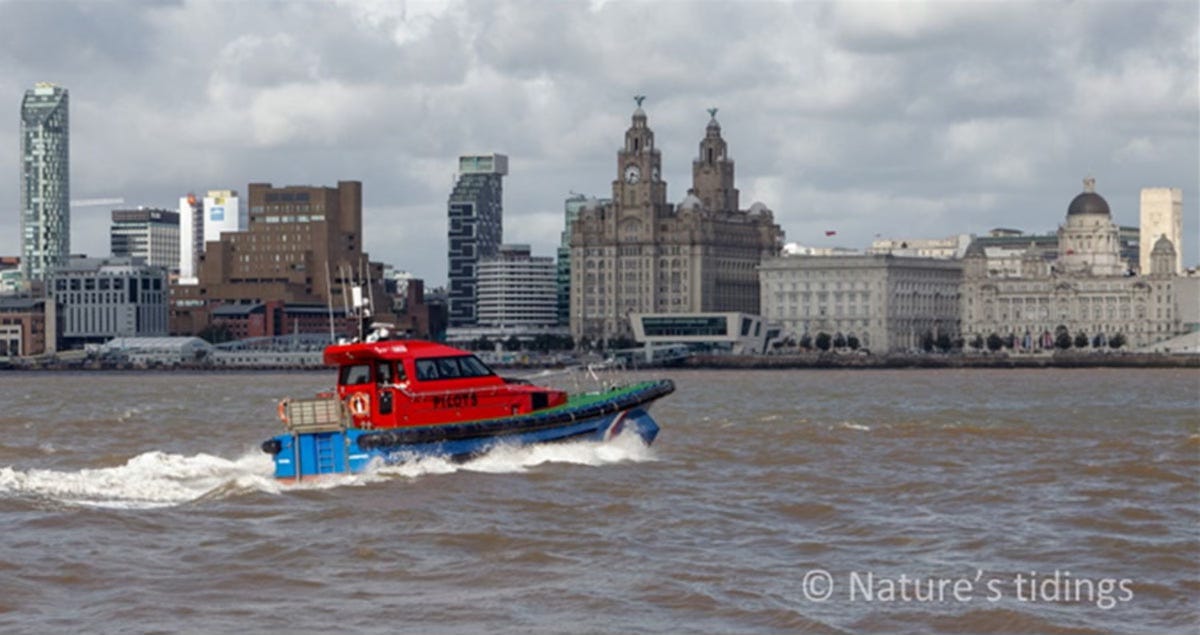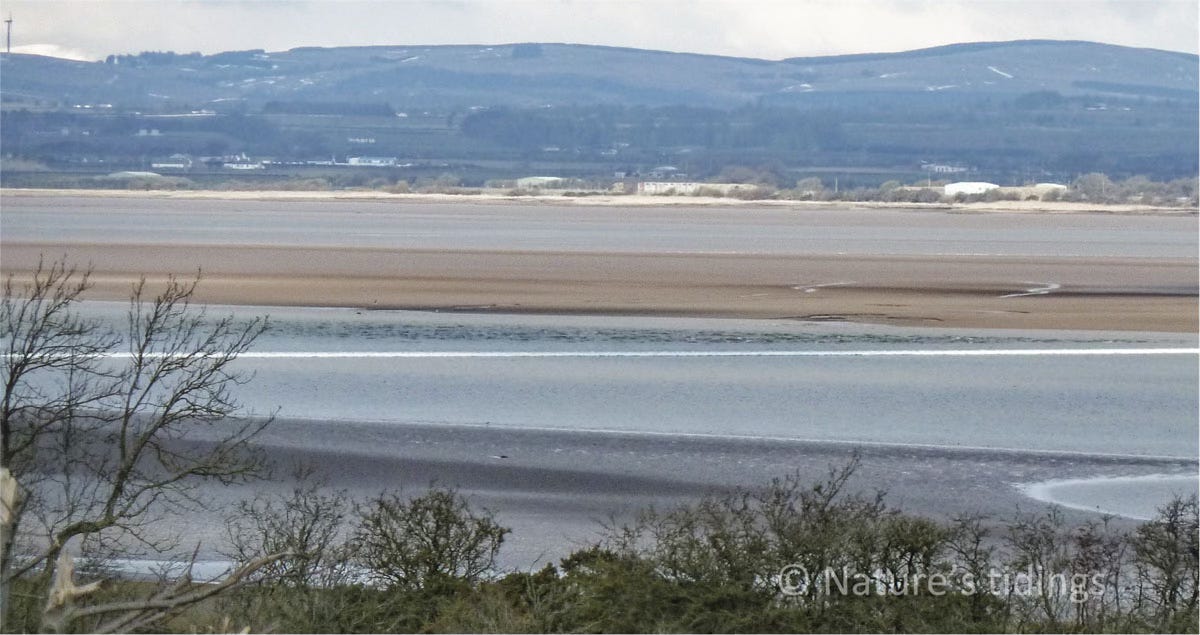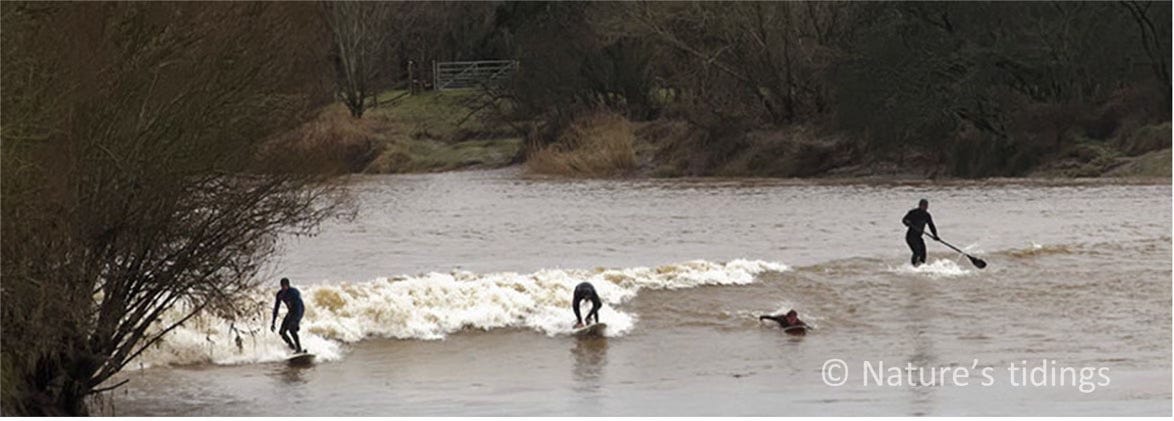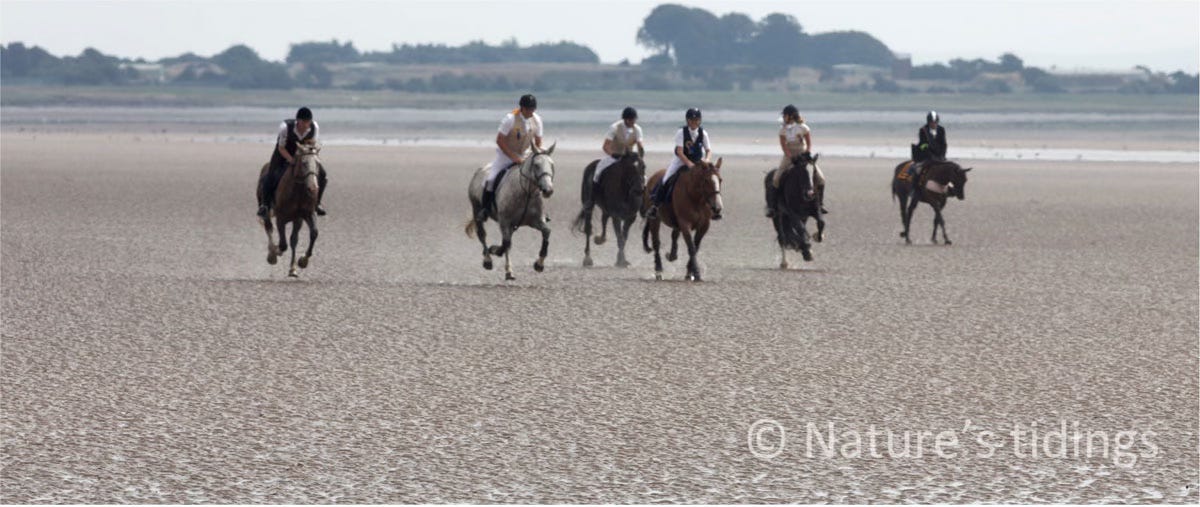If you spend much time in the outdoors, one of the attractions is that you never know quite where it will lead. For example, I’ve known people who have turned an initial interest in hillwalking into a long-term ambition to walk the Munros or Wainwrights, or become a keen rock climber, paraglider pilot or mountain biker.
For myself, I can pinpoint an exact moment when my own interests took an unexpected turn. This was during a cycling trip beside the Solway Firth, when on rounding a corner I suddenly spotted a dramatic line of surf stretching across the water. It took a few seconds to realise that this was a tidal bore and I retraced my route as fast as possible to a better viewpoint, where an impressive breaking wave soon appeared before making its way upstream.
This was the little-known Solway Bore, which got me wondering how many others there were around the UK, soon finding out that nobody really knew. Sure, there were some that drew crowds of spectators, such as the Severn Bore, but an online search quickly showed that there were at least ten more.
Kevin Sene is a scientist and writer and organises the OWPG’s annual professional development and social weekend away. He has written popular science and academic books on natural spectacles, tidal bores and climate, floods and droughts, and guides to the Mersey Estuary and Cumbria coast. Kevin’s website is here and Substack newsletter on natural spectacles here.
In case you don’t know, a tidal bore is a surge of water that occurs on some estuaries on the highest tides, forming a wave due to the funnelling effect as it heads inland. Typically, they start in the lower parts of an estuary about two to three hours before high tide and take a similar time to progress inland. On the east coast of England, they have the more exotic name of aegir or eagre, which is thought to have Norse or Latin roots.
Following that first sighting, I decided to see more, interested both in the spectacle and the science, having done research on hydraulic flows in the past. The next trip was to see Cumbria’s best-known tidal bore, the Arnside Bore, where viewings can be a very civilised experience, with cafés nearby for a pre-event snack and a pier to watch the wave go past.
The Mersey Tidal Bore was another early sighting, which I almost felt remiss at missing in the past, having for several years lived a short walk from a great viewpoint without even knowing about it. Visits to see the Severn Bore were another priority, including during one of the largest events in recent years, graded five-star by local enthusiasts, on a scale of 1 to 5. This attracted many spectators along with local and national news crews, busy interviewing surfers and filming from helicopters and support boats following the wave.
The best known tidal bore in the UK is the Severn Bore, which is also one of the most famous in the world. In the best conditions, its leading wave reaches heights of more than 2m (7ft) and speeds of more than 16 km/h (10mph). It was the birthplace of tidal bore surfing, with the first attempt in 1955 by a former wartime commando leader, Colonel ‘Mad Jack’ Churchill. The record for a continuous ride stands at more than 12km (7 miles), held by surfing enthusiast Steve King. Adapted from Spectacular Britain, Bloomsbury, 2024
For the Severn Bore, you can look up estimated timings online, but new sightings required some trial and error, allowing plenty of time before the tide was expected to rise. While waiting, I learned something else, which is just how beautiful and wild some estuaries are, especially between autumn and spring when they are a magnet for thousands of wading birds such as dunlins, curlews and oystercatchers. With the ever-changing tides, they are also incredibly photogenic, as the greens, greys and browns of saltmarsh and sandbanks give way to an unbroken blue expanse of water, often against a backdrop of distant hills, and sometimes with a spectacular sunset thrown in.
In busier areas, yachts and fishing boats often add to the interest and you quickly realise how many signs of the UK’s maritime past remain, such as abandoned piers, wharfs and docks. Indeed, in the 18th and 19th centuries estuaries were the motorways of their time, teeming with sailing ships and barges bringing goods inland to places you wouldn’t think of as ports nowadays, such as Chester, Warrington and Lancaster.

The characters you meet are another pleasure, with some that stick in mind including the slightly scary drunk who turned out to have an encyclopaedic knowledge of tidal theory, the kayakers who were trying to follow as many tidal bores inland as possible, and the local fisherman who kindly gave me a grandstand view of Annan’s Riding of the Marches from his tractor-trailer, after setting out a safe low tide route on the sands of the Solway Firth.
From research with a fellow enthusiast (thanks Rob) we now estimate that the UK has twenty three active tidal bores. On the west coast, they are found from southwest England to southern Scotland, with three more on the east coast around the Humber Estuary and the Wash. Some travel more than twenty miles inland, and this video says more about why they occur. Several more were once thought to occur around the Wash and in Cumbria but have now disappeared due to port, railway and navigation works.
Some more unusual thoughts are that in the UK the peak of the tide travels around the coast faster than a speeding car, that at more than 15 metres the tidal range in the Severn Estuary is second only to that of the Bay of Fundy in Canada, and that one of the world’s great wildlife displays sometimes occurs when a tidal bore startles wading birds into flight (called a murmuration). Worldwide, the largest is the Qiantang Tidal Bore (or ‘Silver Dragon’) in China, with contenders including examples in India and the Amazon Basin. The mascaret of France rival those of the UK for the largest number of tidal bores in a single country.
In the Occitan language of southern France, the word mascaret means a steer (cow) with a mottled face, the derivation inspired by the thought that a tidal bore resembled a herd of stampeding cattle. Other mascaret occur in Brittany, Normandy and the Baie du Mont Saint Michel. In Brazil a tidal bore is called a pororoca, which means ‘great roar’ in the indigenous Tupi language. From Tidal Bores of England, Scotland and Wales, Troubador, 2021.
So that’s a quick tour of the world of tidal bores and, as a writer and photographer, you naturally feel drawn to share your interests and I’ve now published several books that discuss them to varying degrees. If there’s any wider message in this post, it’s therefore to follow your interests to see where they lead and get scribbling and snapping along the way!









Thanks for the interesting article. They are amazing spectacles, a few years ago I visited the one near Mont St Michel. It was as you described, the waders taking flight etc. We went to surf our sea kayaks, a memorable morning.